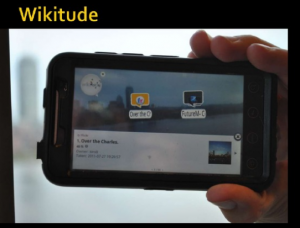 At the recent Podcamp Boston, I spoke on the technologies that will affect us, or in some cases, begin to affect us in 2012. Most of the standards are based on the evolution of the web to being a place where people learn, act, react and transact – and affect transactions.*
At the recent Podcamp Boston, I spoke on the technologies that will affect us, or in some cases, begin to affect us in 2012. Most of the standards are based on the evolution of the web to being a place where people learn, act, react and transact – and affect transactions.*
First is HTML5. In short, HTML5 is all about how people will interact with content.
HTML5 is the blend of new standards that include HTML (which brings the content to the web), XML (that enables context within content), CSS or Cascading Style Sheets (which bring the look and feel to a web site) among several other technologies that can change the very essence of what a web page should look like.
[HTML5 reference | HTML 5 examples: Mozilla Examples; Browser Support; BioDigital Human demo;
Best of all, your current web page will almost certainly continue to work.
Accommodating the user explosion in portable/mobile devices, the HTML5 standard is a feature rich platform which enables you to truly embed audio, video and even 3D objects without the need for a separate player (like Flash). You can even resize video while it’s playing without quality loss. Most important, the new standards can also leverage viewing and content preferences by individuals. HTML5 even enables the ability for content to change how it is viewed, depending on the specific device you are using to view the content.
The big potential change is how will this change how users interact with your content – and how will it enable you to better share the narratives you want to share by leveraging content that you write, as well as the comments and suggestions that users want to share with you.
Leveraging these changes in content will be Location Based Services (LBS) like FourSquare, Gowalla and almost every social network. With better looking, more flexible code, it will be easier to have the same user experience regardless of the device you are connecting with.
 AR or Augmented Reality – a technology that adds a layer of content over a real-world image will continue to grow. Services like Yelp!, Layar and Wikitude will add relevant content when viewing a through your mobiel device’s camera.
AR or Augmented Reality – a technology that adds a layer of content over a real-world image will continue to grow. Services like Yelp!, Layar and Wikitude will add relevant content when viewing a through your mobiel device’s camera.
Everything from aggregating other services (like restaurant review sites) to site-unique content that helps inform and teach you make these applications, still fairly young, not just fun, but on the road to becoming a must have.
Also growing up quickly is the use of Game Mechanics, or Gamification. A great reference for this is the Gamification Wiki. It’s not about the growth of games, but rather the injection of fun in learning and work.
I am already seeing significant growth in the R&D of these products, especially in business and learning markets. Game mechanics, working with social dynamics will also leverage an increase in comments from users who may not normally do so – but will do it for a benefit that is relevant to them. As the evolution continues, expect more audio and video, not just text, to be a big part of the future of personal and corporate sites and communities.
In short, 2012 starts to make content more usable – for the companies and web sites that decide to make content more available, visual and contextual. In short: engaging.
*source: Wayne Kurtzman based on the work of Jeff Jarvis.

